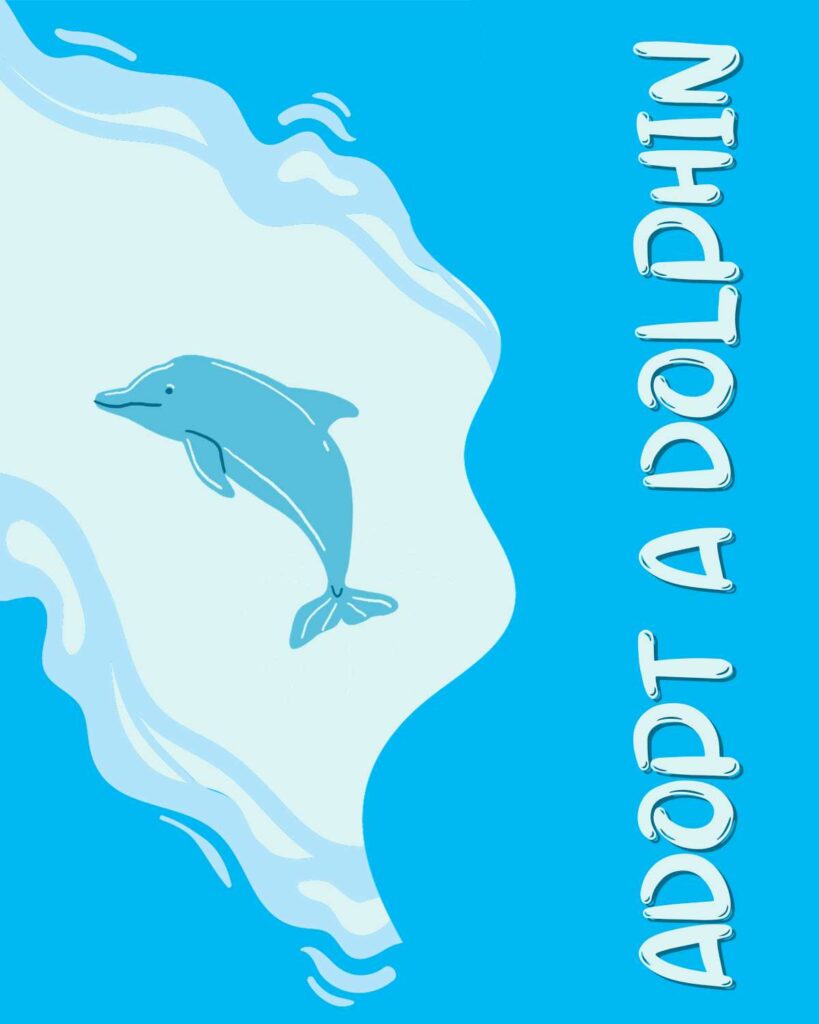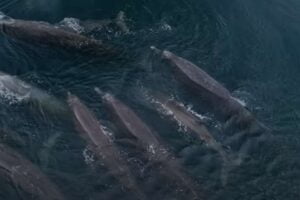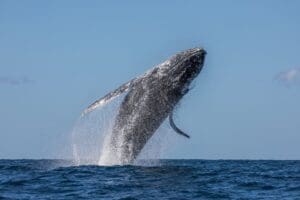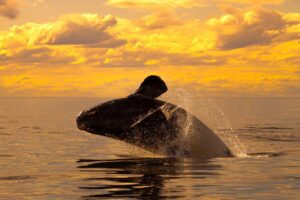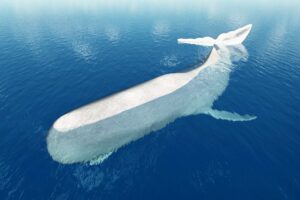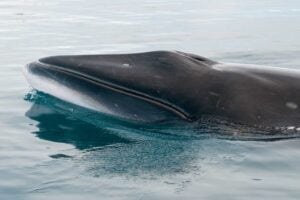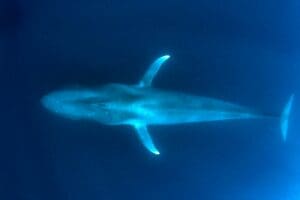The Enigmatic Life of the Atlantic White-Sided Dolphin
Dive into the spellbinding world of the Atlantic White-Sided Dolphin, a marine marvel that dances through the waves with grace and mystery. In the vast blue canvas of the Atlantic Ocean, these dolphins paint a picture of beauty and intrigue. With their distinctive coloring and spirited behavior, they captivate the hearts of all who witness their aquatic ballet. Join us on an enthralling journey as we delve deep into the life of these elusive dolphins. From their playful social interactions to their little-known habits and the challenges they face in the wild, we’re about to uncover the secrets of these enchanting creatures. Prepare to be mesmerized by the stories and wonders of the Atlantic White-Sided Dolphins – the hidden gems of the ocean!
Taxonomy and Physical Characteristics
Classification within the Cetacean Family
You might be curious about the place the Atlantic white-sided dolphin holds in the realm of marine mammals. It belongs to the Cetacean family, which includes all species of whales, dolphins, and porpoises. Within this family, your Atlantic white-sided dolphin is classified under the order Cetartiodactyla, infraorder Cetacea, and family Delphinidae, which is the family comprising oceanic dolphins. Its scientific name is Lagenorhynchus acutus, and it is one of the many fascinating species that grace the Earth’s oceans.
Distinctive Features and Coloration
The Atlantic white-sided dolphin is visually striking due to its distinctive features and coloration. It boasts a robust body, a short but distinct beak, and a dorsal fin that is tall and slightly curved back. The coloration is particularly remarkable: a combination of black, white, and yellowish-tan. The back is predominantly dark grey to black, with a white belly, and a unique yellow or tan patch is found on each side, just below the dorsal fin. This impressive patterning helps in distinguishing them from other dolphin species.
Size and Weight
When you encounter these dolphins, you will be looking at creatures that typically range from 2.5 to 3.1 meters (8 to 10 feet) in length. The weight of an Atlantic white-sided dolphin can vary greatly, but most adults weigh between 180 and 230 kilograms (400 to 500 pounds). This puts them among the medium-sized members of the dolphin family.
Differences Between Male and Female
While looking at male and female Atlantic white-sided dolphins, you may notice some sexual dimorphism. Generally, males are slightly larger and heavier than females. This size difference is typical among many dolphin species and could give you a clue about the gender of the individuals in a pod.
Distribution and Habitat
Geographical Range
As their name implies, Atlantic white-sided dolphins populate the North Atlantic Ocean. Your chances of spotting these dolphins are particularly high along the eastern shores of North America, from New England to Labrador, and across the Atlantic near the British Isles and Norway. However, their range also extends to parts of Greenland and even as far south as the Iberian Peninsula.
Preferred Oceanic Conditions
These dolphins have a particular fondness for the cold temperate and subarctic waters of the North Atlantic. They thrive in oceanic conditions that may seem harsh to you, with water temperatures typically ranging from 5 to 20 degrees Celsius. They are commonly found in continental shelf waters and over deep, oceanic waters as well.
Migration Patterns
Your Atlantic white-sided dolphins are not true migrators in the sense of having predictable long-distance movement patterns. However, they do display some seasonal movements, generally heading towards cooler, northern waters in the summer and moving southward as winter approaches. This migration aligns with the search for food and optimal water temperatures.
Interactions with Other Marine Species
In their vast habitat, Atlantic white-sided dolphins interact with a myriad of marine species. You might find them swimming alongside other dolphin species, such as the common dolphin, or larger cetaceans like fin whales. They seem to get along well with their fellow marine inhabitants, coexisting and sometimes feeding in the same areas.
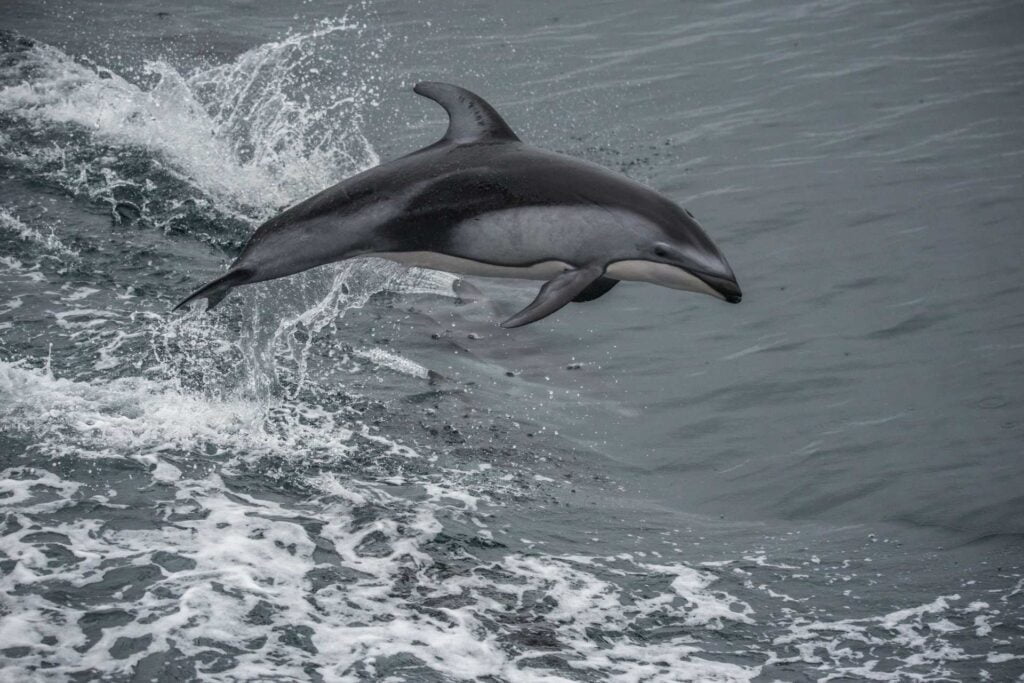

Social Behavior and Group Dynamics
Pod Structure and Hierarchies
If you’ve ever observed Atlantic white-sided dolphins, you’ve witnessed their highly social nature. They live in groups called pods, which can range from just a few individuals to hundreds. There can be complex hierarchies within these pods, though the structure is not as rigid as in some other animal societies. The social bonds they form are essential for their survival and well-being.
Communication Methods
Communicating in the depths can be challenging, but not for your Atlantic white-sided dolphins. They use a combination of clicks, whistles, and body language to converse. Each dolphin has its own signature whistle, which acts somewhat like a name, helping them keep in touch amidst the vast ocean.
Social Interactions Within Pods
The social interactions within pods are fascinating. You’ll see these dolphins engaging in playful activities, cooperative feeding, and even mutual grooming practices known as allopreening. Social play is particularly common among young dolphins, but adults partake, too, often strengthening social bonds and learning from one another.
Interactions with Humans and Other Dolphins
Your interactions with these dolphins might be limited, as they are wild animals, but there are instances when they approach boats and display curiosity towards humans. They also interact with other dolphin species. These interspecies engagements are typically peaceful and can involve joint hunting or socializing activities.
Diet and Feeding Habits
Primary Food Sources
When it’s time for a meal, Atlantic white-sided dolphins focus on fish and cephalopods. Their diet includes herring, mackerel, cod, squid, and occasionally small crustaceans. They are opportunistic feeders, and their prey selection can vary depending on what is available in their environment.
Foraging Strategies
Your Atlantic white-sided dolphins employ a few strategies to locate and capture their prey. They use echolocation to find fish in the dark ocean depths and may work together to herd fish into dense groups called bait balls, making it easier to catch them. They’ve also been observed following fishing boats to feed on discarded catch, a strategy that shows their adaptability.
Role in the Marine Food Chain
These dolphins play a crucial role in the marine food chain. As predators, they help maintain the balance of fish and cephalopod populations. This balance is vital to ensuring a healthy ecosystem, where energy is effectively transferred from one trophic level to another.
Feeding Grounds and Seasonal Variations
Feeding grounds for the Atlantic white-sided dolphin are often associated with areas that have a high abundance of fish. Seasonal variations in prey availability can influence their diet and, subsequently, their distribution. You might see them frequenting different areas at different times of the year, following the movements of their prey.
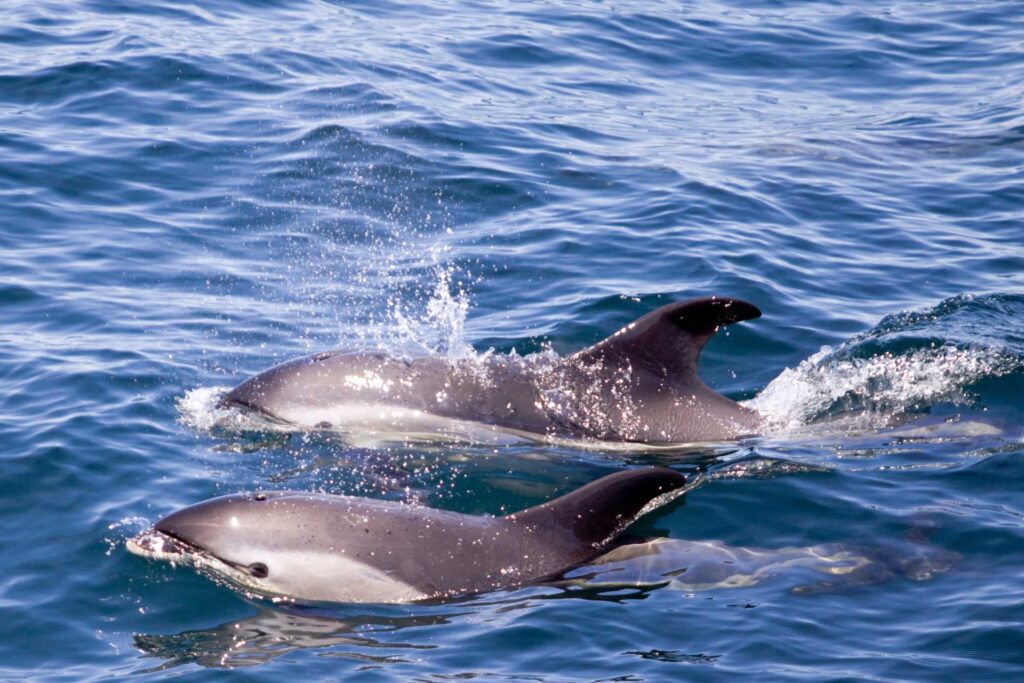

Reproduction and Lifespan
Mating Rituals
Mating rituals among Atlantic white-sided dolphins involve a series of intricate behaviors. Courtship can include vocalizations, gentle touching, and synchronized swimming. Mating can happen at any time of year, but there appears to be a peak during the spring and summer.
Gestation Period and Calving
Following a successful mating, the gestation period for a female Atlantic white-sided dolphin is about 11 months. Calving typically occurs once every two to three years. The birth is a remarkable event, as the calf is usually delivered tail-first to minimize the risk of drowning.
Parental Care and Calf Development
Once born, the calf is lovingly cared for by its mother, who provides it with rich, fatty milk and protection. Calf development involves learning how to hunt and navigate the ocean’s challenges. Weaning occurs when the calf is between 18 and 24 months old, but the juvenile may stay with the mother for an extended period afterward to learn essential survival skills.
Average Lifespan in the Wild vs. Captivity
In the wild, the average lifespan of an Atlantic white-sided dolphin can be up to 25 years or more. Their lifespan can vary in captivity, and there is ongoing debate about whether captive conditions can truly meet the needs of such intelligent and wide-ranging creatures.
Behavioral Adaptations
Echolocation Abilities
Your Atlantic white-sided dolphins are equipped with exceptional echolocation abilities. This biological sonar system enables them to navigate, communicate, and hunt with precision in the often dark and murky waters of the Atlantic Ocean. They emit high-frequency clicks and listen for the echoes that bounce back off objects, allowing them to “see” with sound.
Swimming and Diving Techniques
When you watch them in action, you’ll be impressed by their swimming and diving prowess. They are agile swimmers, capable of reaching high speeds, which helps them evade predators and catch quick-moving prey. They can also dive to depths over 200 meters, although they usually feed in shallower waters.
Thermoregulation in Cold Waters
Surviving in the chilly waters of the North Atlantic requires efficient thermoregulation. Luckily, they are equipped for this with a thick layer of blubber that insulates their bodies and helps regulate temperature. Their circulatory system can also adjust to conserve heat when necessary.
Adaptations to Predators and Threats
You may wonder how they manage predators. Atlantic white-sided dolphins have several adaptations to evade predators like sharks and orcas. They have excellent agility and speed and can exhibit unpredictable movements. They are also highly social, and their group living can provide safety in numbers.
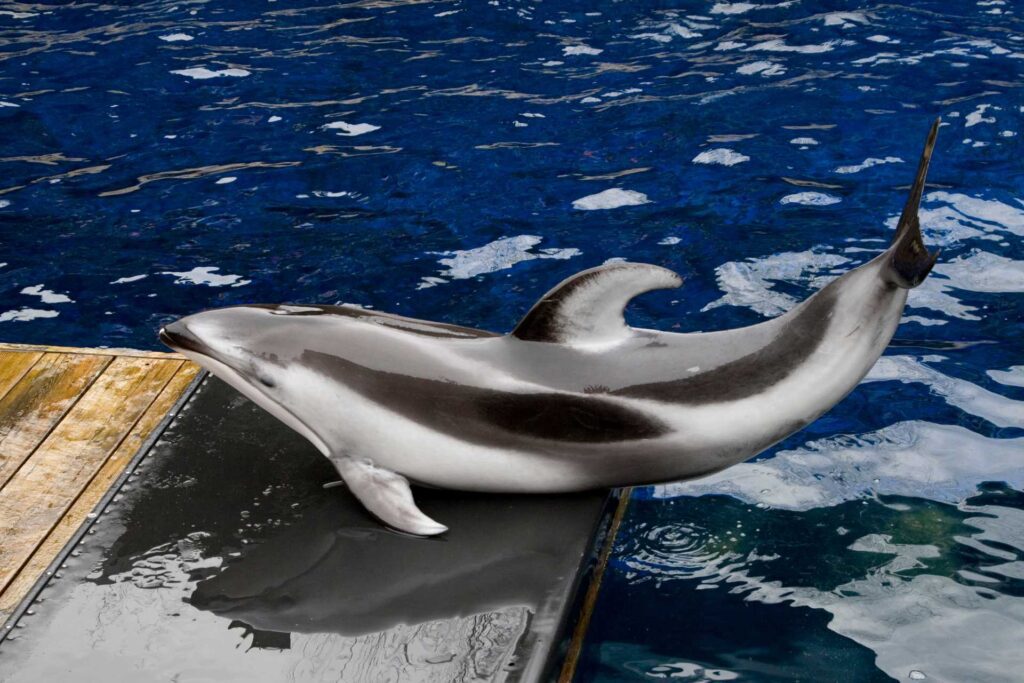

Conservation Status
Current Population Estimates
Conservationists estimate approximately 200,000 to 300,000 Atlantic white-sided dolphins in the wild. While this number may seem large, monitoring the population is important to ensure their continued survival.
Threats to Survival
Threats to their survival include entanglement in fishing gear, pollution, and habitat degradation. Climate change also poses a risk as it can alter the distribution of their prey and affect the characteristics of their habitats.
Conservation Efforts and Protective Measures
Various conservation efforts and protective measures are in place to protect these enchanting creatures. They are protected under the Marine Mammal Protection Act in the USA, and there are international efforts to manage fishing practices and create marine protected areas.
Role of Marine Sanctuaries and Research
Marine sanctuaries play a key role in the protection of Atlantic white-sided dolphins. These safe havens are critical for their survival, offering them a refuge from human threats. Additionally, ongoing research continues to improve our understanding of their needs and behaviors, informing better conservation strategies.
Observation and Study
Scientific Research Methods
To study your Atlantic white-sided dolphins, scientists use a range of methods. These include boat-based, aerial, and acoustic monitoring, each providing different insights into population size, distribution, and behavior.
Importance of Tagging and Monitoring
Tagging and monitoring are essential tools for researchers. By attaching tags that transmit location, depth, and other data, scientists can track individual dolphins and gain valuable information on their migration patterns, habitat use, and social structures.
Challenges in Studying Atlantic White-Sided Dolphins
Despite these methods, studying them is not without challenges. They are fast-moving and can travel long distances, making them difficult to track consistently. Their preference for deep and often remote waters further complicates research efforts.
Contributions to Marine Biology
Nevertheless, studying Atlantic white-sided dolphins has significantly contributed to marine biology. It sheds light on the complex social structures of marine mammals, their ecological roles, and how they adapt to the changing oceans.
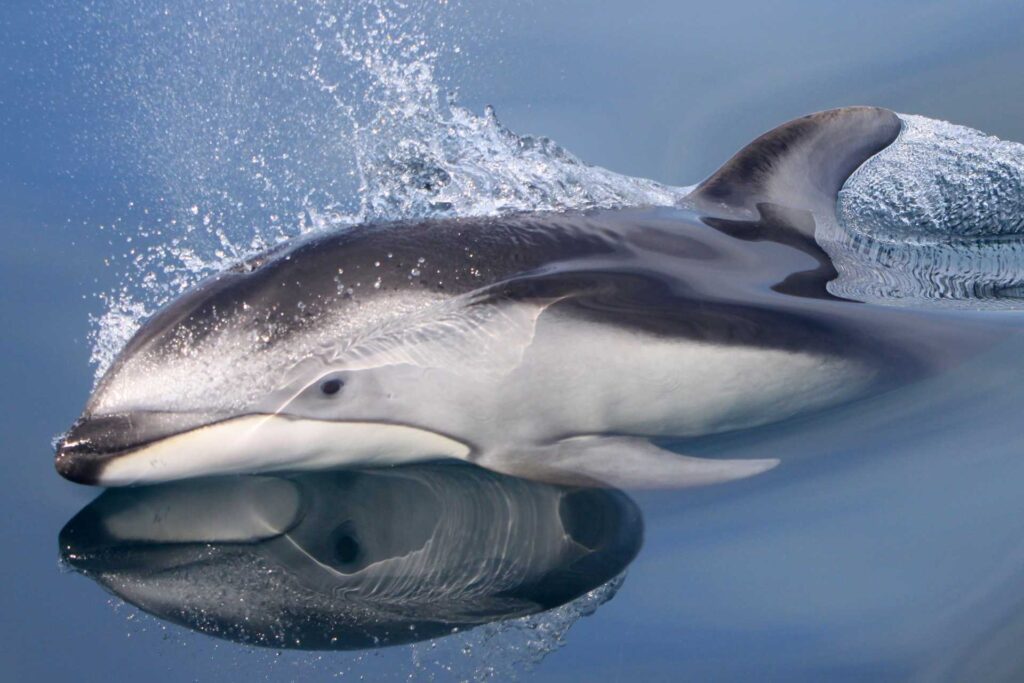

Cultural and Economic Impact
Role in Local Mythologies and Folklore
In some coastal cultures, your Atlantic white-sided dolphins are celebrated and respected, featuring in local mythologies and folklore. They are often seen as good omens or symbols of protection and are respected marine community members.
Ecotourism and Dolphin Watching
Dolphin watching has become a popular ecotourism, benefiting coastal communities economically. Watching these magnificent creatures in their natural habitat can be a thrilling and educational experience for you and other enthusiasts.
Economic Benefit to Coastal Communities
Atlantic white-sided dolphins attract tourists, providing an economic boost to coastal communities through tourism-related activities. This benefit can also incentivize local investment in conservation efforts.
Conservation Awareness and Public Education
The more you learn about them, the more likely you support their conservation. Public education programs and responsible ecotourism initiatives are pivotal in raising awareness and prompting action to protect these dolphins and their habitats.
Encounters and Rescue Efforts
Documented Rescue Missions
There have been documented rescue missions involving Atlantic white-sided dolphins that have been stranded or entangled. These efforts often require coordinated actions between multiple organizations and volunteers and can result in successful rehabilitations and releases.
Human Impacts and Entanglements
Human activities pose significant threats to these dolphins. Entanglement in fishing gear is a critical issue, and efforts to reduce bycatch and improve fishing practices are ongoing. Reducing these impacts can mean the difference between life and death for many individuals.
Rehabilitation Success Stories
The stories of rehabilitating and releasing Atlantic white-sided dolphins back into the wild are powerful reminders of the difference conservation actions can make. These success stories inspire and motivate further rescue and rehabilitation efforts.
The Role of Non-Profit Organizations
Non-profit organizations are pivotal in rescue efforts, research, and public education. Their work often fills gaps that governmental agencies cannot cover alone and provides essential support for the protection of Atlantic white-sided dolphins.
FAQ
Are white-sided dolphins rare?
Atlantic White-Sided Dolphins are not considered rare but are less commonly encountered than some other dolphin species. Their population is healthy in the North Atlantic, where they are primarily found.
Where are white-sided dolphins found?
Atlantic White-Sided Dolphins inhabit the cooler waters of the North Atlantic Ocean, particularly around Greenland, Norway, and the northeastern coasts of North America. They are also commonly seen in the North Sea.
What are the white dolphins called?
Dolphins with prominent white coloring are often called “Atlantic White-Sided Dolphins” and “Pacific White-Sided Dolphins,” depending on their habitat.
What is the rarest type of dolphin?
The rarest dolphin is the Maui dolphin, a critically endangered subspecies of the Hector’s dolphin, found only off the west coast of New Zealand’s North Island. Their population is critically low, with estimates suggesting only a few dozen individuals remain.
How many white-sided dolphins are left?
There are no precise population estimates for Atlantic White-Sided Dolphins, but they are not considered endangered. They appear to have a stable population, with sightings common in their preferred habitats.
What is the most aggressive dolphin?
While individual behavior varies, some reports suggest that orcas, also known as killer whales, a type of large dolphin, can exhibit more aggressive behavior.
What is the dark truth about dolphins?
Despite their friendly reputation, dolphins can exhibit complex and sometimes aggressive behaviors. This includes instances of aggression towards other marine animals and even members of their own species, challenging the often simplistic portrayal of dolphins as invariably gentle creatures.
Is a dolphin intelligent?
Dolphins are highly intelligent and known for their problem-solving abilities, complex social structures, and sophisticated communication.
Why do dolphins like humans?
Dolphins may show interest in humans due to curiosity, lack of fear, and social nature, but their “liking” is subjective and varies among individuals.
How long do white-sided dolphins live?
Atlantic White-Sided Dolphins have an average lifespan of 20 to 30 years in the wild. Age can vary depending on environmental factors, food availability, and predation pressures.
What eats white-sided dolphins?
The primary predators of white-sided dolphins are large shark species, like the great white shark and orcas. These predators can pose a significant threat, especially to younger or weaker individuals.
How big are white-sided dolphins?
Atlantic White-Sided Dolphins typically grow to about 7 to 9 feet in length and weigh between 200 to 300 kilograms. They are known for their robust and streamlined bodies, enabling agile movement in the water.


